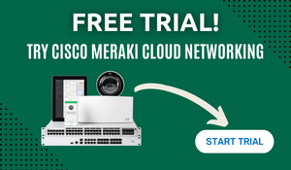 As the speed and transfer rates of computer hardware continue to grow alongside demand for ever-more data, new cabling becomes a necessity to keep up. The new standard for 40G backbones is MPO connectors: Multiple-Fiber Push On / Pull Off. These work with Quad SFP+ transceivers to allow four simultaneous 10G or better connections.
As the speed and transfer rates of computer hardware continue to grow alongside demand for ever-more data, new cabling becomes a necessity to keep up. The new standard for 40G backbones is MPO connectors: Multiple-Fiber Push On / Pull Off. These work with Quad SFP+ transceivers to allow four simultaneous 10G or better connections.
An upgrade to QSFP+ can mean a significant reduction in overall cabling, which brings better reliability and responsiveness.
MPO can work at higher speeds as well, able to bundle hundreds of individual fiber lines at once into a single terminator. The standard is evolving, with higher speeds and greater fiber densities being supported every year.
As this is a relatively new standard, MPO connectors are not well-understood by many entering the field of high-bandwidth services. However, they're necessary to deliver the speeds promised by today's top-line backbones.
Things You Need To Know About MPO Connectors
1 - The Early Bugs Are Ironed Out
MPO didn't get off to a good start, with the first major rollout in the late 2000s suffering from significant design flaws. Among other problems, the ferrite heads tended to become mis-alligned with repeated insertions, and they had a susceptibility to dust getting into the enclosure.
However, since the second generation of MPO debuted around 2010, the problems were ironed out. The new MPO designs have proven to be reliable and fully compliant with the ICE 61754-7 and TIA 604-5 standards for optical cabling.

2 - MPO vs MTP
One of the biggest areas of confusion is in regards to naming, with the cabling in question sometimes being referred to as MPO or MTP.
MTP is a particular brand of MPO-compliant fiber cables from USConec. They incorporate a number of revisions to the overall design, such as removable connector housings, while still remaining 100% intercompatible with other MPO products.
Accordingly, there's no such thing as MTP-specific hardware. It's just an upgrade to the cable and connector construction.
Whether they're worth the extra money is largely a matter of opinion at this point, although they have their benefits. The key point is that MTP is simply one specific implementation of MPO whose creators, undoubtedly, would like to see become more standard in the future.
3 - Who Should Be Looking To MPO
It really depends on the timeframe involved. Right now, copper wiring is in the process of being phased out entirely, although it's still going to take awhile. Copper has basically reached its limit in terms of maximum speeds, as well as suffering from problems overcoming long distances.
It'll probably be another ten years at least before copper has been largely phased out in businesses, but fiber is the cabling of the future and will be for some time to come.
In the present, 40G and 100G Ethernet speeds are largely only being used by groups such as Metronet service providers and the biggest of businesses. 1G and 10G speeds are fine for most individual businesses unless they have extreme data needs.
Networking Never Sleeps
The future of networking is rarely certain, but there's no reason to think the drive for greater speeds and throughput will cease any time soon. That's going to create a need for more frequent rewirings, but until we can find far more efficient processes, it's going to be unavoidable.
Keeping up with new technology is our job here at Hummingbird Networks. If you've got any questions about QSFP+ equipment, MPO, MTP, or other cabling or fiber-based hardware, just give us a call.
Images Courtesy of: https://www.flickr.com/photos/raresmdutu/6654535843/sizes/l/in/photostream/ and https://www.flickr.com/photos/jdhancock/3618602355/sizes/l/











